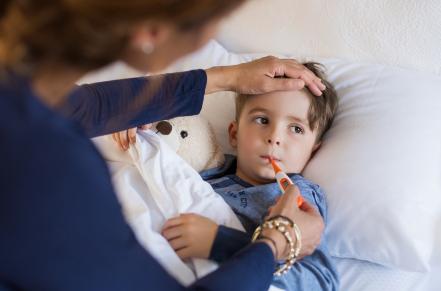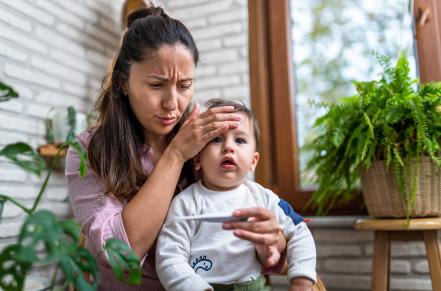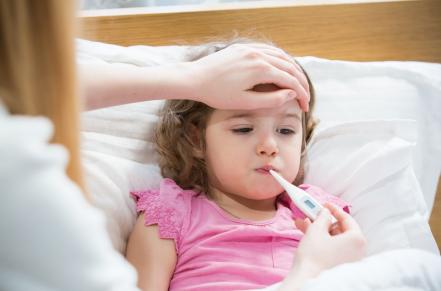What Is It?
Tuberculosis is a serious respiratory infection caused by bacteria called Mycobacterium tuberculosis.
What Are the Symptoms?
You should know the difference between the two stages of TB: (1) TB infection means having the TB germ in the body without being sick, and (2) active TB or TB disease means having the germ and also being sick from it, with the symptoms of active TB.
Persons with active TB have symptoms such as a cough that won’t go away, a cough that brings up blood, a fever lasting longer than two weeks, night sweats, feeling very tired, or losing a noticeable amount of weight. The TB skin test cannot show active TB: active TB must be diagnosed by a health care provider, based on a physical exam, a chest x-ray, and laboratory tests. The treatment for active TB usually involves taking at least three different drugs for at least six months, and it usually cures the TB.
Who Gets It and How?
TB is transmitted by respiratory discharges when an infected person has the active disease. These germs can be spread through the air when a person with TB disease coughs, sneezes, yells or sings. Children, although they may be infectious, are usually not as likely as adults to transmit TB to others. TB is not spread by objects such as clothes, toys, dishes, walls, floors and furniture. Active disease can cause damage to the lungs and occasionally can spread to other parts of the body such as the bones, brain and kidneys.
Most often the disease is inactive. This means that the bacteria has entered a person’s lungs and is contained, so that it does not cause damage and is not contagious. Young children or people with immune problems are especially vulnerable.
When a child has TB infection, it means that the child was infected by an adult with active TB, often a person in the home. Most persons who have TB infection do not know it because it does not make them sick. A person with only TB infection cannot spread TB to others and does not pose an immediate danger to the public.
TB infection is diagnosed only by the TB skin test. This safe, simple test is given at most local health departments. A small injection is made under the skin, usually on the forearm. In persons who are infected with the TB germ, the skin test causes a firm swelling in the skin where the test was given. After one or two days, a health care provider reads the results of the TB skin test.
When Should People with this Illness Be Excluded?
A person with active disease should stay home until a health care provider determines the disease is no longer contagious. Adults are more likely than children to be contagious. Although most people with a positive TB test never develop symptoms, they may develop active disease many years later. An active case of TB that occurs within the child care program should be reported to the health department.
How Can I Limit the Spread of TB?
- All caregivers, including all volunteers and members of a family in a family child care setting, are required by child care regulations to be tested for TB prior to employment. It is recommended that they be tested every four years after that. They should follow the recommendations of their local health department for the frequency of tests.
- In the United States, TB is more common in some populations, for example immigrants coming from Asia, Africa and Latin America and medically under served minority populations. However, overall, TB infection in children younger than five years old is rare. Therefore, TB skin testing of all children in child care is not useful. However, a local health department may decide to test children who have more risk for infection. Some programs (e.g., Head Start) and some states require children to have a TB skin test before they can attend.
- Licensing requires that child care providers report to their local health department and to Licensing if there are two or more known or suspected cases of TB in a child care program. However, the American Academy of Pediatrics strongly recommends that child care providers report even if there is only a single case, to ensure that the local Public Health Department is aware that this serious illness is present in a child care setting.
| English | Spanish |
|---|---|
| Tuberculosis (TB) (pdf; 196.71 KB) | Tuberculosis (TB) (pdf; 214.59 KB) |







